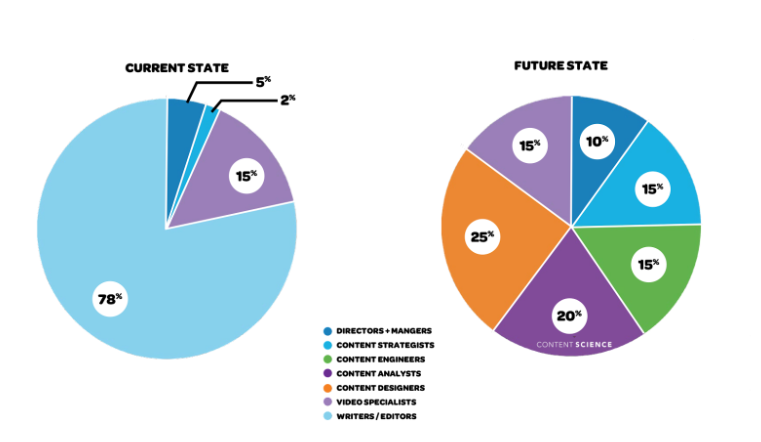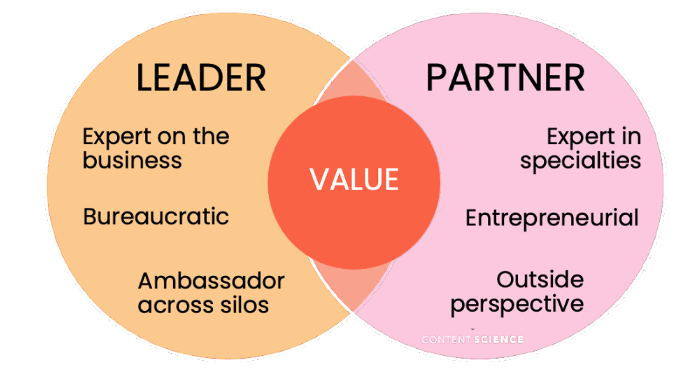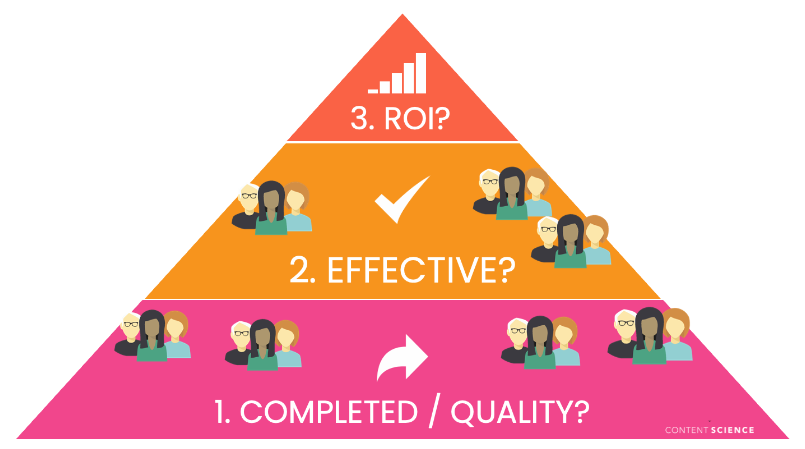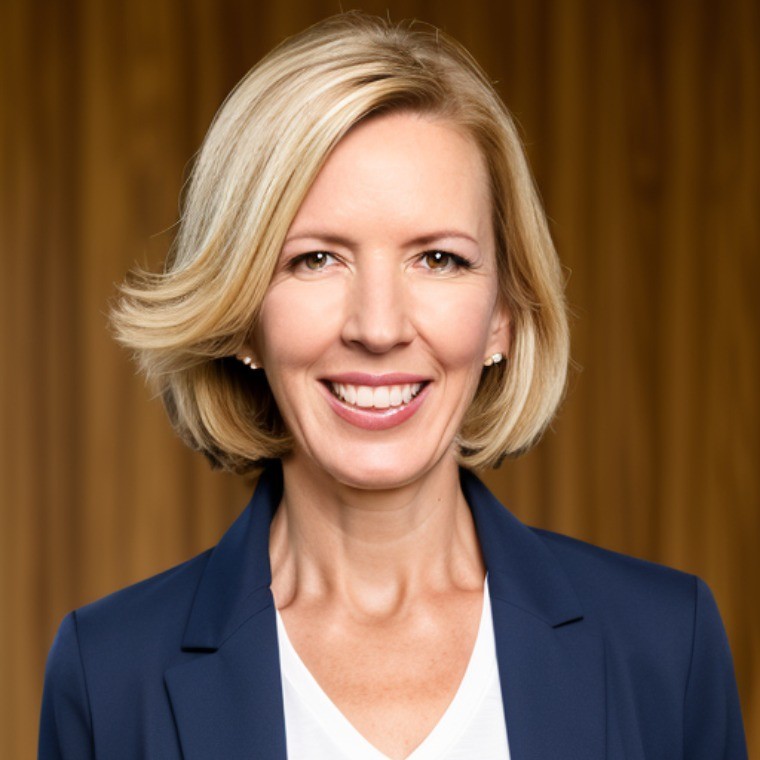
What sets successful content leaders apart? Plenty of examples of how not to lead are on full display. We also see plenty of well-intended leadership advice on social media that is perhaps too trite or too general to be handy for content leaders. So, I’ve noodled on a more meaningful–and hopefully positive–answer for content leaders based on a combination of Content Science’s content operations research and my experience. I’m sharing my progress so far, as I think all of us who care about this question are continuously learning.
Before we look at what makes successful content leaders different, let’s consider the exciting opportunity they face.
The Unprecedented Opportunity for Content Leaders
More leadership positions are available than ever. We found 52% of organizations participating in our research reported having a role at the director level or above. Many had positions at the vice president or C-level. As content becomes increasingly crucial to digital business, I anticipate the leadership opportunities will only multiply. Exciting!
This great news has a few implications. One implication is that what constituted content leadership in the past is not as relevant to content leaders today. The scale and stakes are bigger and higher now than they were in the past. A content leader today is not managing a blog or coordinating product documentation. A content leader is orchestrating content across part or most of a customer or employee experience. So not all advice or best practices from past content leaders is as relevant now.
Of course, this opportunity is not without challenges…lots and lots of challenges. We’ve highlighted the most common challenges to maturing content operations based on our research, such as communicating across silos and dealing with red tape. I’ll also note that digital disruption has meant more change–and more types of changes–at most organizations. In our full report of What Makes Content Operations Successful?, I describe these changes as earthquakes. Some are small and require minor adjustments. Others are seismic shifts with devastating effects, like layoffs wiping out a team due to a company pivot or merger. All are hard to predict.
So, what sets outstanding content leaders apart among these quite formidable challenges? You’ve seen Content Science and I talk about defining and communicating content vision. That’s still a top differentiator. But here I’d like to call out three more differentiators that we haven’t discussed as much.
1 Outstanding Content Leaders Hire Differently
Content leaders are moving away from the idea that one or two content roles can do it all. Outstanding leaders are filling modern roles like these
- Content designer / UX writer
- Content strategist
- Content marketer
- Content analyst
- Content engineer / architect.
Toni Mantych, a seasoned content leader currently with ServiceNow, elaborated on why these kinds of roles are emerging in our recent conversation.
Designers continue to turn greater attention to the content within their products and experiences, and content practitioners continue to realize the importance of designing seamless retrieval and delivery experiences for their content.
In larger organizations, more specialized roles will continue to emerge to create and support more processes that ensure both substance and form are always being considered—together and more organically, thoughtfully, and consistently—from inception to delivery.
Let me share an example with a different company. A large conglomerate came to our team asking to collaborate on content strategy and content operations to support ambitious plans for personalization. We worked out an ambitious vision and talked about some awesome ideas for strategy that would require more content engineering and measurement, among other things. Great! Then we started talking about content operations, or how to make all these great ideas happen. And we realized that almost 80% of the 200+ staff were writers / editors. The company was about to set themselves up to fail. So, we proposed a different approach to making up the team in this diagram.

You can see a more balanced mix of modern content roles. Now, I’m not saying this is the right mix for every company. My point is outstanding content leaders are very thoughtful about the roles they hire.
Perhaps not surprisingly, great content leaders also offer content-specific training. If the leader makes internal hires, upskilling might be in order. If the leader makes outside hires, training in the way their new employer handles content likely is needed. Regardless of the reason, these content leaders prioritize content-specific training for their teams.
2 Outstanding Content Leaders Partner Differently
Great content leaders realize that they cannot handle the many challenges they face alone or even with their team. So, these leaders seek collaboration with partners.
More specifically, these leaders don’t view vendors as a threat to their jobs (or their team’s jobs) or as order takers. I sometimes call this no vendor vanity. Such leaders select vendors carefully and treat them as valued partners, ideally for the long haul.
Now, why is this so important? It’s because content leaders at large growing companies have their hands full with being an expert on the ever-changing business, dealing with the bureaucracy of a growing company, and working to bridge silos as an ambassador for content.
So, the really smart content leaders partner to get more specialized expertise, an entrepreneurial mindset that helps simplify the complex, and an outside perspective on trends and best practices to balance the internal politics. Today, these partners might be marketing agencies, consulting firms, or content technology products.

3 Outstanding Content Leaders Champion Content Differently
These leaders champion the content cause differently. And do it with data. You’ve probably seen Content Science mention the strong correlation between evaluating (or measuring) content effectiveness and reporting success. We mention it often because it’s crucial. But, here, I’d like to point out that it’s hard, so simply starting takes courage.
The outstanding content leaders start to measure what they can easily. This effort puts them at the first level of content measurement, or content intelligence, which might track how much content their teams produced, how many sprints their teams participated in, whether content was completed on time, whether content adhered to quality standards, and so on.

Good content leaders build on the foundation to measure whether the content was effective, which is the second level of content measurement. This might involve answering questions such as
- Did the content help customers achieve their goal?
- Did the content increase organic traffic from the right audience?
This type of measurement is harder to do, but fortunately is becoming more common so more tips and tools are available.
Outstanding content leaders eventually correlate content effectiveness with a return on investment. I don’t think this level of measurement is harder, frankly, than level 2. But it’s a lot scarier for content leaders. You might find there wasn’t a return. The good news is our research can quell those fears. We’ve found a strong correlation between measuring content ROI and content success.
Another way of looking at what outstanding content leaders do with data is they create a virtuous cycle of content hype (well-deserved hype, of course). If a content leader and their team measure at levels 1 and 2, then they’re most likely making better content decisions. And then, if they can start correlating content effectiveness with ROI, they have better progress reports, case studies, and lessons learned to share with team members and stakeholders (often through a center of content excellence). Those reports, case studies, and more motivate teams, solidify trust from stakeholders, and make securing more resources and opportunities much easier within a bureaucracy. Championing the content cause doesn’t get better than that.
But, this virtuous cycle depends on a content leader having the courage to cross the threshold between levels 2 and 3, or what I sometimes call the thrive threshold. Let me share a quick example.
We worked with a large hardware technology company on the ROI for improving product content for a new SaaS offering. Such product content plays a role in every part of the customer experience. So, we developed a framework that reflects the vast impact. You can see a small sample in the table here.
ROI Framework for Product Content
| Value Area | Description | Formula |
|---|---|---|
| Customer acquisition increase | Revenue earned from an increased number of customers due to content that strengthens marketing claims, accelerates sales | Annual revenue * new customer increase |
| Customer account growth | Revenue earned from customers adding an offer or service due to content that removes friction for ordering, gives confidence in the value | Incremental annual revenue * customers who added offers / services |
| CSAT increase | Customer retention due to accelerated time to value, positive experiences | Annual revenue * retention increase |
| Brand adherence | Revenue uplift from consistent branding across all platforms | Annual revenue * percent uplift |
| Time savings | Time saved by employees involved in content due to data visibility, clear vision, and alignment on standards, requirements, and process / workflow | People * cost per hour * annual hours saved |
| Self service | Support calls/tickets deflected with effective self service | # of deflected tickets * cost per ticket |
We considered everything from customer acquisition to self service and support. This quickly added up to millions in potential impact. You might think that delighted the content leader, but I’d say the more accurate description was alarmed. There’s a fine line between excitement and fear, and for a while this content leader was on the fear side. Claiming that much potential impact also means taking on that much responsibility. But, fortunately, the content leader had the courage to introduce change and cite the potential ROI as a big reason why.
The Courage of Content Leaders = A Force
I’ve said in the past that there is no such thing as a content fairy. But I believe mustering the courage to approach content differently is close to a magical force. This force draws everyone involved–team members, stakeholders, and partners–through the many challenges and toward new levels of content impact. If you’re considering a leadership role in the content space, your expertise will serve you well. But don’t underestimate the power of your courage.
Events, Resources, + More
The Ultimate Guide to End-to-End Content
Discover why + how an end-to-end approach is critical in the age of AI with this comprehensive white paper.
The Content Advantage Book
The much-anticipated third edition of the highly rated book by Colleen Jones is available at book retailers worldwide. Learn more!
20 Signs of a Content Problem in a High-Stakes Initiative
Use this white paper to diagnose the problem so you can achieve the right solution faster.
Upskill with Content Science Academy
Training for modern content roles through on-demand certifications + courses or live workshops.






Comments
We invite you to share your perspective in a constructive way. To comment, please sign in or register. Our moderating team will review all comments and may edit them for clarity. Our team also may delete comments that are off-topic or disrespectful. All postings become the property of
Content Science Review.